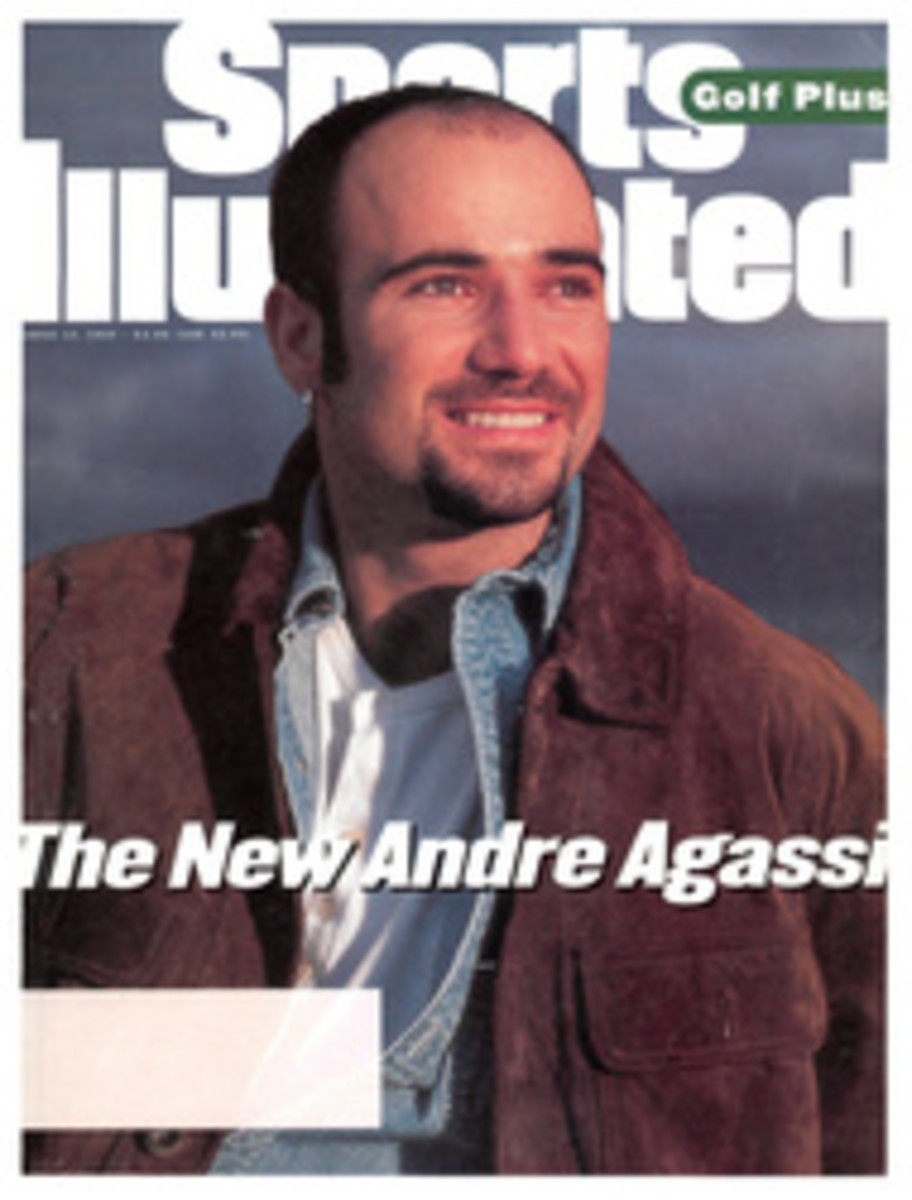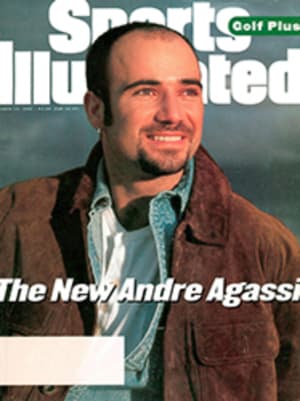
HAMMER TIME LANCE DEAL WAS THE BRIGHTEST STAR OF THE U.S. INDOORS, EVEN THOUGH HIS EVENT SELDOM SEES THE LIGHT OF DAY
IF TRACK and field is sports' equivalent of the
witness-protection program -- a guarantee, at least in
non-Olympic years, of anonymity -- where does that leave those who
toil in its most obscure event, the hammer throw?
During the U.S. indoor season, when the 16-pound hammer throw is
replaced by its sister event, the 35-pound weight throw, it leaves
the discipline's practitioners in places like Kent State and Azusa
Pacific, while the meets they are supposedly part of are held
miles away, in arenas in downtown Cleveland and Los Angeles. In
the days when the national indoor championships were held at
Madison Square Garden, the weight throw took place halfway across
New Jersey, in the bowels of Princeton's Jadwin Gym, where, three
floors beneath the earth's surface, competitors grunted and
strained like a race of banished giants. But if the throwers
grumbled about their lot, they kept it to themselves, which was
probably best, because given a choice, many meet directors would
ignore the weight throw altogether.
Lance Deal doesn't give them a choice. With the Atlanta Games 500
days away, the 33-year-old Deal, who finished seventh in Barcelona
in 1992 and was ranked fourth in the world last year, could become
the first American to win an Olympic medal in the hammer since
Harold Connolly won the gold in 1956. To promote the hammer throw
in the U.S., Deal has used his own meager earnings to establish a
nonprofit corporation, the U.S. School of Hammer Throwing. In 1993
he paid his coach, Stewart Togher, out of his own pocket when
Togher's position -- and salary -- as national hammer throw coach
was eliminated by USA Track and Field. And Deal spent more than
$5,000 to fly his training partners to meets that year, thus
guaranteeing that the weight throw would have the three
competitors required by Grand Prix rules for points to be awarded.
``A lot of it is self-preservation,'' Deal says. ``If the event
fades away, I'm out of a vocation and an avocation. I got into
this because I love it. I don't want to see it disappear.''
The weight throwers didn't exactly disappear at the USA Mobil
Indoor Track & Field Championships in Atlanta last weekend, but
they were hidden behind an ominous black curtain at one end of the
Georgia Dome. In front of the curtain the bright lights belonged
to Michael Johnson, who won his 40th straight 400 meters, clocking
44.63 seconds to break his world indoor record by .34 of a second.
Johnson got a standing ovation from the crowd of 15,239 during his
victory lap, at the end of which he was met by fourth-place
finisher Mark Everett, who did the only sensible thing: He bowed
histrionically.
There were no bows on Deal's side of the curtain. When the meet
announcer invited spectators to step over and watch the weight
throw, he got perhaps 100 takers. ``Lot of people for a hammer
throw,'' Deal would say later.
He didn't disappoint them. In the second round he threw 81'-11
1/2", bettering his own three-week-old world best (so designated
because the governing body for track and field, the International
Amateur Athletic Federation, does not recognize the event) by
three inches. In the stands Togher was briefly jubilant, then
confided, ``We're playing, doing a Bubka.'' The reference was to
the calculated way that pole vaulter Sergei Bubka has repeatedly
edged his world record higher, by fractions of an inch at a time,
to claim bonus money with each new mark.
When Deal muscled the weight out 82'11-3/4" on his fourth throw
and a stunning 84'10-1/4" on his sixth, Togher commenced a
delirious jig. ``I take back that Bubka remark,'' he said. ``I've
waited many years for a throw like that.''
Deal improved his world best three times. Besides adding more
than three feet to the mark, Deal earned his second overall Grand
Prix title as the highest point-getter on the indoor circuit and
the $40,000 that goes with that distinction. ``What a week!'' he
said, exulting. ``I even had my first premeet press conference.''
Deal discovered the hammer the only way Americans do -- by
accident. He grew up in Casper, Wyo., playing all the usual
American sports, most of them very well. At Natrona County High,
Deal was an All-America linebacker, but he saved his deepest
passion for the discus. ``I just loved watching the thing fly,''
says Deal. ``I could throw until dark or until the thunderstorms
came and then walk home.''
He won state high school titles in the discus and the shot put,
then went off to Montana State on a combined football and track
scholarship. He was there only three days when he noticed
something about football. ``I looked at the guy ahead of me on the
depth chart,'' Deal says. ``He'd had three knee operations, and he
only had two knees. That kind of wear and tear wasn't going to
help me throw the discus in the Olympic Games.''
Accused by the football coach of being a quitter, Deal took solace
in the discus. When he won the event at a meet in 1980, it seemed
his career as a discus thrower was taking off. In fact it was
about to end. That summer, while working at the felicitously named
Ox Sporting Goods in Casper, he saw a strange implement hanging on
the wall. ``I had never seen a hammer in real life before,'' he
says. He bought it for $6 and took it home, and it gradually
replaced the discus as his first love.
Deal made slow progress until 1985, when he loaded up his
Volkswagen and headed for Eugene, Ore., to train with Togher, the
man who would change his life. A former Scottish weightlifting
champion, Togher was coaching at Oregon and spending weekends
conducting hammer clinics. ``I was a resident alien in a
nonrevenue sport,'' says Togher. ``What a resume.'' To Togher,
throwing the hammer is both art and science. ``It's a microcosm of
the solar system,'' he says, blue eyes burning. ``You are the sun,
and the ball is the orbiting planet. It's fundamental physics.''
``Basically,'' says Deal, seeking to translate, ``instead of
worrying about how strong you are and what you can do to the
hammer, it's how much you can get back out of the hammer.''
Another part of Togher's philosophy is the importance of competing
clean -- without anabolic steroids. Togher and his protege say
that what you see is the real Deal and nothing more, all 6'2", 260
pounds of him. That was enough for Deal to do something almost
unheard of at last summer's Goodwill Games in St. Petersburg: beat
the Russians, who dominate the hammer, on their own turf. Not only
is he the most accomplished U.S. thrower in decades, but he is
also, after Togher, the event's most patient teacher, happily
explaining his arcane calling to the curious. ``What you saw
today,'' he told reporters Saturday, ``was an indoor hammer. It
has a triangular handle, weighs 35 pounds, and is 16 inches long.
Now the outdoor hammer. . . .''
As Deal continued his discourse on the 46-inch-long outdoor
model, Johnson was on the other side of the curtain settling
into the blocks for the 400, an event that needs no explanation.
Though Johnson had strolled through the lobby of the Hyatt the
night before in a $6,000 black fur coat streaked with white --
``It's just a little mink,'' he insisted -- he is normally the
most reserved of men. A business major during his days at Baylor,
he appreciates his own worth, and he knows he is seriously
undervalued. Johnson has been the world's best 200 and 400 runner
for almost five years, an eternity in the volatile world of the
sprints.
In Saturday's 400 he roared out of the blocks and was clocked at
200 meters in 21.08, a seemingly suicidal pace. But no one came
close to catching him. The only sign of strain as he drove off the
final turn was a slight increase in the arch of his back.
To Johnson it was no big deal. ``Nothing I've done indoors has
been a revelation to me,'' he said. ``I'm confident I will have a
big outdoor season. I still think I can run around 43 flat.''
At least as intriguing as that goal -- which, if fulfilled, would
take .29 of a second off Butch Reynolds's world record -- is
Johnson's ambition to win the 200 and the 400 at the world
championships this August in Sweden. To accommodate such a double
he has asked the IAAF to shift the schedule so there is a day of
rest between those events. And already looking to '96, Johnson
visited the Olympic Stadium, now under construction in Atlanta.
Asked if he tried running across the finish line, he chuckled.
``Twice,'' he said. ``Once for the 200, once for the 400.''
COLOR PHOTO:PHOTOGRAPH BY JIM GUND Making Tracks Allen Johnson (in lane 4) got the jump on his rivals to win the national 60-meter hurdles title at the USA Mobil Indoor Track & Field Championships in Atlanta (page 32). [photo from T of C]
COLOR PHOTO:BILL FRAKES (INSET)Deal needed six throws to reach 84'10-1/4" and as many officials to certify the mark. [Lance Deal during hammer throw]
COLOR PHOTO:JIM GUND[see caption above--overhead view of officials measuring the distance of throw]COLOR PHOTO:JIM GUND Johnson, a singular sensation, aims for a sensational double.[Michael Johnson running]

